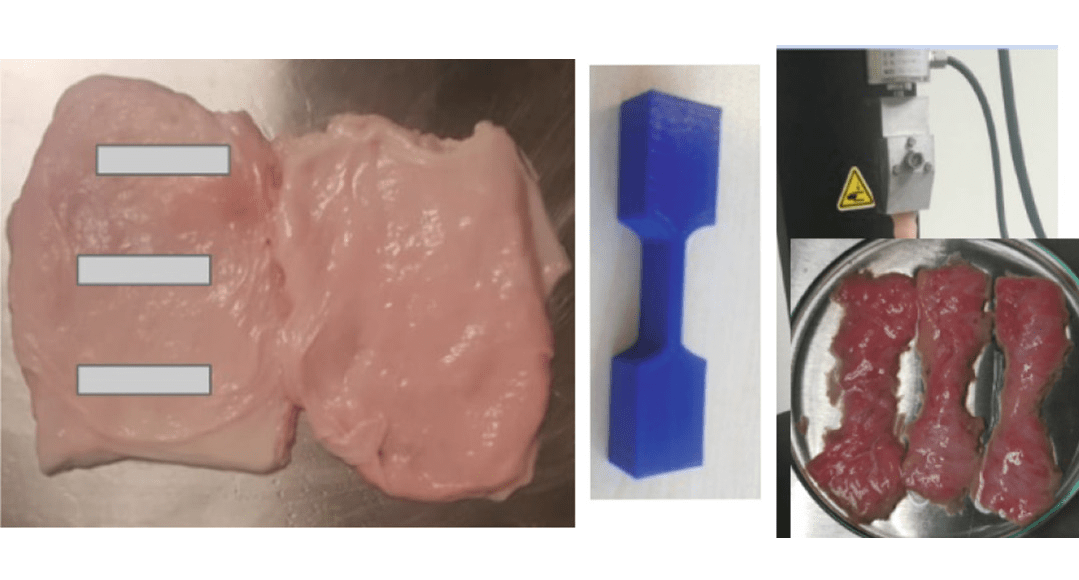Stress Urinary Incontinence (SUI) is the involuntary release of urine from the bladder, a common condition that affects about 1 in 3 women of age 60 and above (Urology Care Foundation). New therapies such as implantable electronic stimulators and engineered tissue substitutions require a thorough understanding of the biomechanical characterization of the urinary bladder (UB). Dr Alejandro Garcia-Gonzalez and his team at Technologico de Monterrey in Mexico in collaboration with the University of Texas at Dallas presents this paper that covers surface representation of the UB and biomechanical analysis using Voigt’s model parameters identification.
Using a 3D scanner, bovine UB was stretched over a designed support and re-imaged with over 6 million points and 12 million triangles. 3 samples were then obtained from the UB at separate distinct regions. The CellScale Univert with a 200N load cell was used to perform a stress-strain test, of which the data was collected to derive elasticity and a damping constant from Voigt’s model. The images above show where the samples were taken from the bovine UB, the dogbone-shape template, which was used to cut the samples from the UB, and the tensile test setup.
Read the full journal article here: https://doi.org/10.1007/978-3-030-30648-9_122
Read about Dr Garcia-Gonzalez’s research here: https://research.tec.mx/vivo-tec/display/PID_130966
To read about the characterization of young and aged mouse skin, click here.








